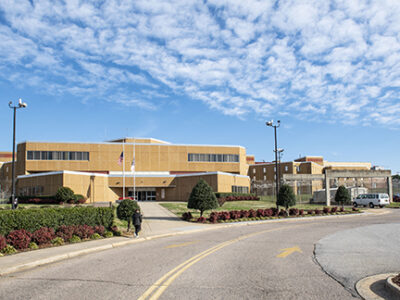
Criminal Rehabilitation and Justice in North Carolina
Because there are fifty states in the U.S., there are fifty different criminal justice systems, plus the federal criminal justice system and separate systems for Washington D.C. and the various U.S. territories and possessions. This article summarizes how criminal justice works in North Carolina.
Prison Population Data for North Carolina
The following are five questions to ask when seeking information about criminal justice in North Carolina:
- Does North Carolina have alternatives to incarceration?
- How many people are incarcerated in North Carolina?
- What are the biggest prisons in North Carolina?
- What is North Carolina’s recidivism rate?
- What is North Carolina’s crime rate?
According to the Bureau of Justice Statistics, North Carolina has the 30th highest incarceration rate in the U.S., ahead of Nebraska but behind Colorado. North Carolina incarcerates 271 people for every 100,000 people living in the state. North Carolina’s incarceration rate is in the relative middle ground compared to other states, though its incarceration rate is considerably lower than the overall U.S. incarceration rate (358 per 100,000).1
According to research by the National Institute of Corrections, North Carolina has about 20,960 people behind bars in 97 jails across the state as of 2019. Most individuals in jails serve pretrial detention or short sentences for low-level offenses. North Carolina also manages 57 state prisons, which house about 34,079 inmates. North Carolina’s community corrections department is responsible for 76,905 people under probation and 14,212 people under parole. The state’s Department of Corrections operates with 25,300 employees and an annual budget of $2.2 billion.2
The Urban Institute reports that the Department of Corrections is the seventh costliest item on North Carolina’s annual budget, behind the police, highways, higher education, K-12 education, public welfare, health, and hospitals.3

Central Prison. Image courtesy of NCDPS.gov
According to the Sentencing Project, North Carolina had 330 prisoners in private prisons in 2000.4 By 2019, that number had dropped to 30, a 91% drop. Currently, the 1,450-bed Rivers Correctional Institution is the only private prison in North Carolina, and its contract expired on March 31st, 2021.5
The largest state prison in North Carolina is the Central Prison, located in Raleigh. The prison has a capacity of 1,104 and was opened in 1884. At the time of this writing, there are five federal prisons in North Carolina, and one federal prison camp.6
Crime Rates in North Carolina
Thankfully, most of North Carolina’s crime rates are trending downward. According to a 2022 report from the state that compared 2020 and 2021 crime rates:7
- Total crimes recorded in North Carolina fell from 2,741 for every 100,000 to 2,586 for every 100,000.
- The violent crime rate dropped 3.6%, from 446 per 100,000 to 430 per 100,000.
- Property crime also fell, dropping 6% between 2020 and 2021.
- Aggravated assaults fell by 2.4% between 2020 and 2021.
- Unfortunately, murders went up by 18%.
- Rapes increased by 7%.
- Robberies fell by 16%.
The most important metric when studying crime is the degree to which violent crime fluctuates. Overall, North Carolina’s violent crime is down, despite the increase in murders from 815 in 2020 to 960 in 2021 and the increase in rapes from 2,894 in 2020 to 3,077 in 2021. North Carolina is making progress in reducing violent crime and property crime overall (all metrics of property crime are trending downward). However, there is still some work to be done in addressing murder and rape, two of the most high-profile types of violent crime.
North Carolina Recidivism

Photo by Kristi Blokhin/Shutterstock.com
Recidivism is perhaps the most telling indicator of a state’s criminal justice system’s success (or lack thereof). A state’s recidivism rate is defined by the rate of offenders who are released from prison, commit crimes, and end up in prison again.
According to data calculated by the Bureau of Justice Assistance, a federal agency, North Carolina’s recidivism rate is approximately 40%.8 Unfortunately, the state’s own reporting suggests the recidivism rate is much higher than the federal estimate, likely closer to 49%. That means the criminal justice system in North Carolina is not working for half of the individuals who go through it.9
That high level of recidivism shows that, even as crime rates are falling in North Carolina, the state’s criminal justice system cannot take credit for the decline in crime. This is counter to the traditional narrative that “Punishment and incarceration serve as a deterrent to crime.”
Instead, crime rates are declining in North Carolina even as the state’s criminal justice system produces poorer results than in previous years, evidenced by the increasing recidivism. It seems that fewer people are committing crimes in North Carolina. Still, those who commit crimes are more likely to be repeat offenders, continuing to commit crimes even after one or more terms of incarceration and interaction with the state’s criminal justice system.
Criminal Rehabilitation and Alternatives to Incarceration in North Carolina

To improve its criminal justice system and lower recidivism, North Carolina must offer evidence-based rehabilitation for offenders through criminal reform or incarceration alternatives.
At the time of this writing, the criminal reform system in North Carolina offers some rehabilitation programs for inmates, but policymakers must expand them considerably. To begin, North Carolina should add criminal reform programs that focus on the following:
- Addiction and substance abuse programs for offenders who misused drugs and alcohol
- Vocational training to help offenders learn valuable job skills for post-incarceration employment
- Programs that teach life skills & coping strategies to help offenders learn how to lead crime-free lives
Existing alternatives to incarceration in North Carolina help nonviolent offenders experience reform and pay their dues to society without being exposed to the harmful aspects of a prison sentence. However, policymakers and criminologists must expand alternatives to incarceration in North Carolina. At the time of this writing, 17% of North Carolina inmates are serving sentences for non-trafficking (possession only) drug crimes, the highest category offense in the state. Given the rehabilitation tools available, there is little to no need to incarcerate anyone for nonviolent, possession-only drug crimes.10

North Carolina has made some positive advances in criminal justice, especially in reducing its crime rate and moving away from outsourcing to private prisons. Looking to the future, improving rehabilitation programs in North Carolina, offering educational programs inside prisons in North Carolina, and offering alternatives to incarceration for nonviolent offenders should help lower recidivism while improving public safety.
Sources:
- BJS. “Prisoners in 2020 – Statistical Tables.” Bureau of Justice Statistics, 2020. bjs.ojp.gov
- NIC. “North Carolina 2019.” National Institute of Corrections, 2019. nicic.gov
- UrbanInstitute. “Project Carolina.” Urban Institute, 2022. urban.org
- SentencingProject. “Private Prisons in the United States.” The Sentencing Project, 2022. sentencingproject.org
- ThePulse. “N.C.’s only private federal prison will close, more to follow after Biden ordered to end BOP contracts with private facilities.” The Pulse, 2021. pulse.ncpolicywatch.org
- NCDPS. “Prison Facilities.” North Carolina Department of Public Safety, 2022. ncdps.gov
- NCSBI. “Crime In North Carolina – 2021.” North Carolina State Bureau of Investigation, 2022. ncsbi.gov
- BJA. “State Criminal Justice Profile: North Carolina.” Bureau of Justice Assistance, 2014. bjafactsheets.iir.com
- NCHealthNews. “After prison, individualized reentry plans are cutting recidivism.” North Carolina Health News, 2022. northcarolinahealthnews.org
- UNC. “Who’s in Prison in North Carolina?” UNC School of Government, 2018. nccriminallaw.sog.unc.edu
Related Articles
What Is the Scope of Private Prisons in the U.S.?
In 2001, the Federal Bureau of Justice Assistance authored a report analyzing then-emergent issues regarding private prisons in the United States. According to the authors...
Read more >>
The State of Prisons in Tennessee
Tennessee Prison Population at Record Highs [Tennessee has] more than 1,000 inmates in Tennessee serving life sentences with the possibility of parole after 51 years...
Read more >>
Successes from Correctional Centers in Nashville, Tennessee
The Art of Happiness “I learned the art of happiness. “Before this class I knew what made me happy but I was unaware that happiness...
Read more >>




